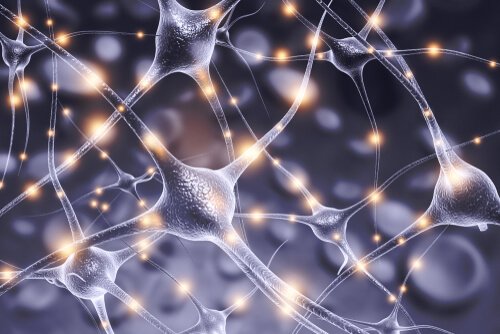What is Connectionism?

Understanding how the brain works is one of the biggest challenges in the field of psychology. Thus, different approaches and perspectives exist. In fact, there was a revolution after the emergence of cognitive psychology and the Turing machine. From then on, researchers began to consider the brain an information processor.
The computer metaphor represents the first theory created to explain the functioning of the brain. Since people soon realized how much it didn’t contemplate, they intended to seek new explanations and cognitive psychologists created a theory known as connectionism.
However, before we explain connectionism, it’s important to understand how the computational theory of mind views the brain. For this reason, we’ll review the main aspects of it in the next section.
Cognitive psychology and the computational theory of mind
Cognitive psychology considers the human brain an information processor. This means it’s a system capable of coding the data coming from the environment, modifying it, and extracting new information from it. In addition, the system incorporates these new data in a continuum of inputs and outputs.

The computational theory of mind considers the brain a computer. Through a series of programmed algorithms, it transforms information inputs into a series of outputs.
The most relevant failures of this theory include the speed at which we process information, the flexibility with which we act, and the imprecision of our responses. If our brain had programmed algorithms, we would have other types of responses. Our responses would be slower, more rigid, and much more precise than they actually are due to all the processing steps that need to be carried out. In short, we’d be like computers.
Although we can try to adapt this theory to new evidence, the computational theory of mind still has faults. This is where connectionism comes in. It’s a much simpler theory than the previous one and explains brain functioning a lot better.
What is connectionism?
Connectionism explains that information is processed through patterns of activation spreading. But what are these patterns? In simpler terms, it means that when information enters your brain, neurons begin to activate, forming a specific pattern that produces a specific output. This forms networks between neurons that will process information quickly without needing preprogrammed algorithms.
To understand this, let’s look at a simple example. Imagine that a person tells you to define the concept of a dog. When the word reaches your ear, the set of neurons associated with it automatically activate in your brain. The activation of this group of neurons spreads to others it’s connected to. This may include neural patterns related to the words mammal, bark, or fur. And this will lead you to define a dog as “a mammal with fur that barks”.
Properties of connectionist systems
According to this perspective, in order for these systems to work like the human brain seems to behave, they have to fulfill certain conditions. The basic properties that must be met include:
- Spreading activation. This means that neurons, when activated, influence those they’re connected to. This can occur by facilitating their activation or by inhibiting it. In the previous example, dog neurons facilitate those related to mammals but inhibit those related to reptiles.
- Neural learning. Learning and experience affect the connections between neurons. Thus, if we see many dogs that have fur, the connections between the neurons related to both concepts will be strengthened. This is how we create the neural networks that help us process information.
- Parallel processing. Neurons don’t activate one after the other. The activation occurs in parallel between all the neurons. And it isn’t necessary to process one activation pattern after another. You can have multiple patterns going on at the same time. Thanks to this, we can interpret a lot of data simultaneously. However, there is a limit to our capacity.
- Neural networks. The system consists of a large network of neurons grouped together through mechanisms of inhibition and activation. Information networks and behavioral outputs are also found within these networks. These groupings represent the structured information that the brain possesses and the activation patterns represent how the information is processed.

Conclusions
This way of interpreting neural functioning not only seems very interesting, but the studies and research conducted on it prove fruitful. There are many computer simulations of connectionist systems on memory and language. These simulations are very similar to human behavior. However, we still can’t claim that the brain works in this exact way.
In addition, this model has also has contributed to the field of computing and artificial intelligence.
To conclude, it’s important to understand that connectionism is much more complex than what we explained in this article. If you’re curious about it, don’t hesitate to continue researching it and its implications.
This text is provided for informational purposes only and does not replace consultation with a professional. If in doubt, consult your specialist.








